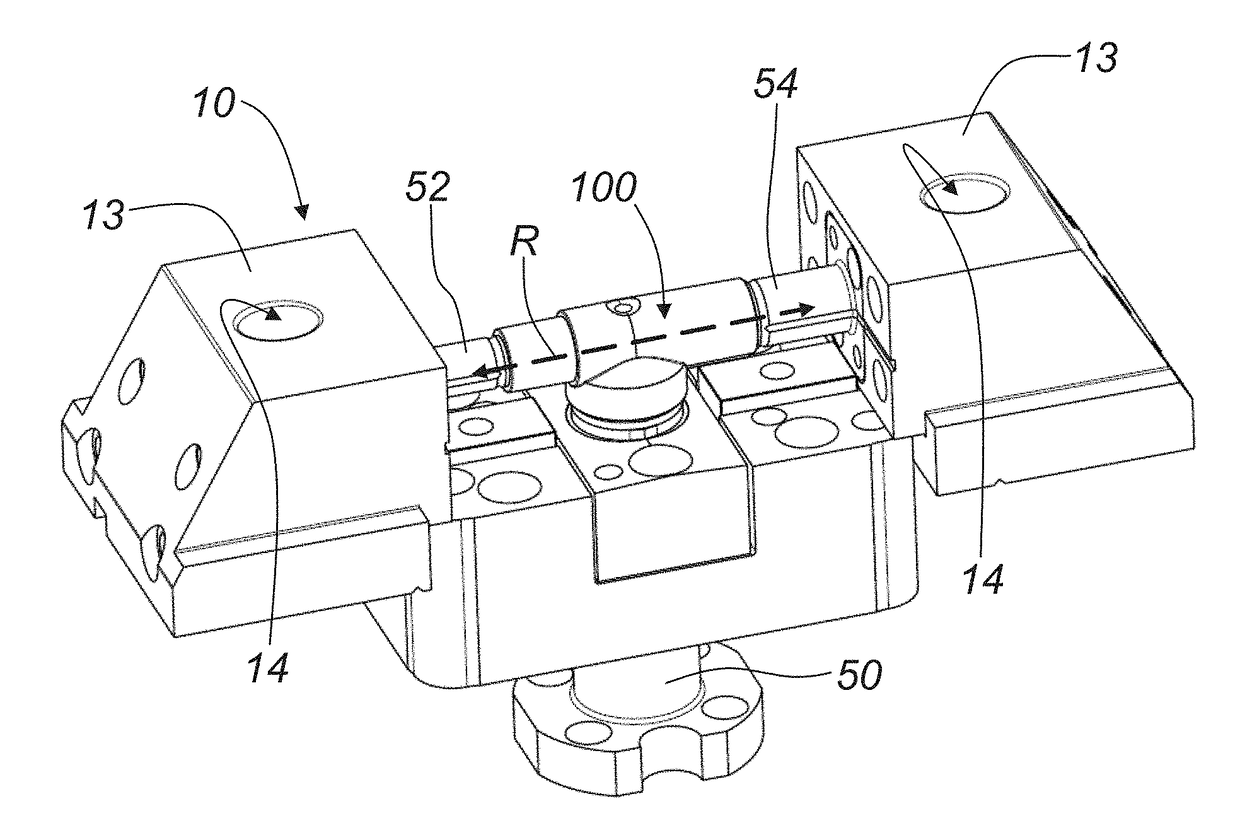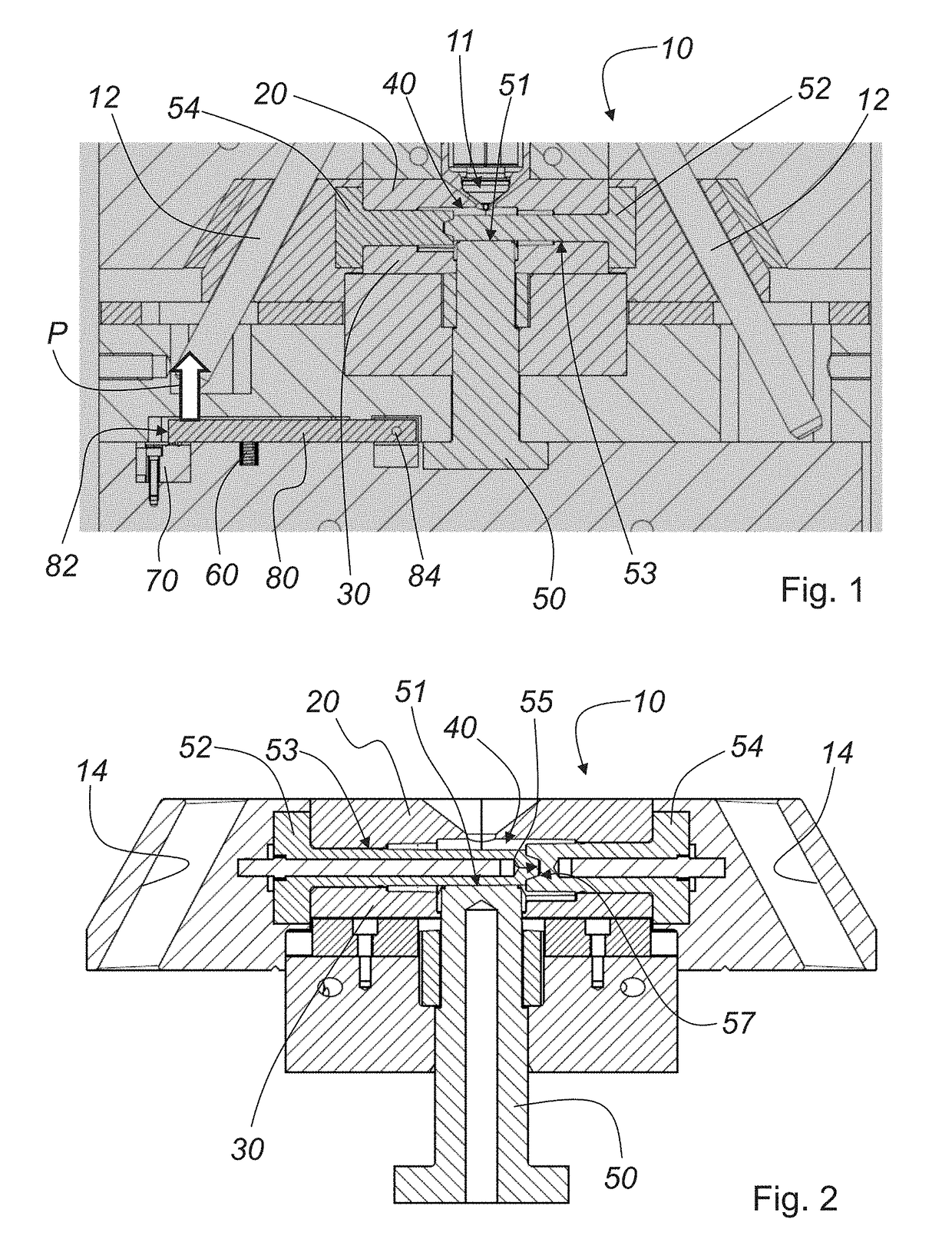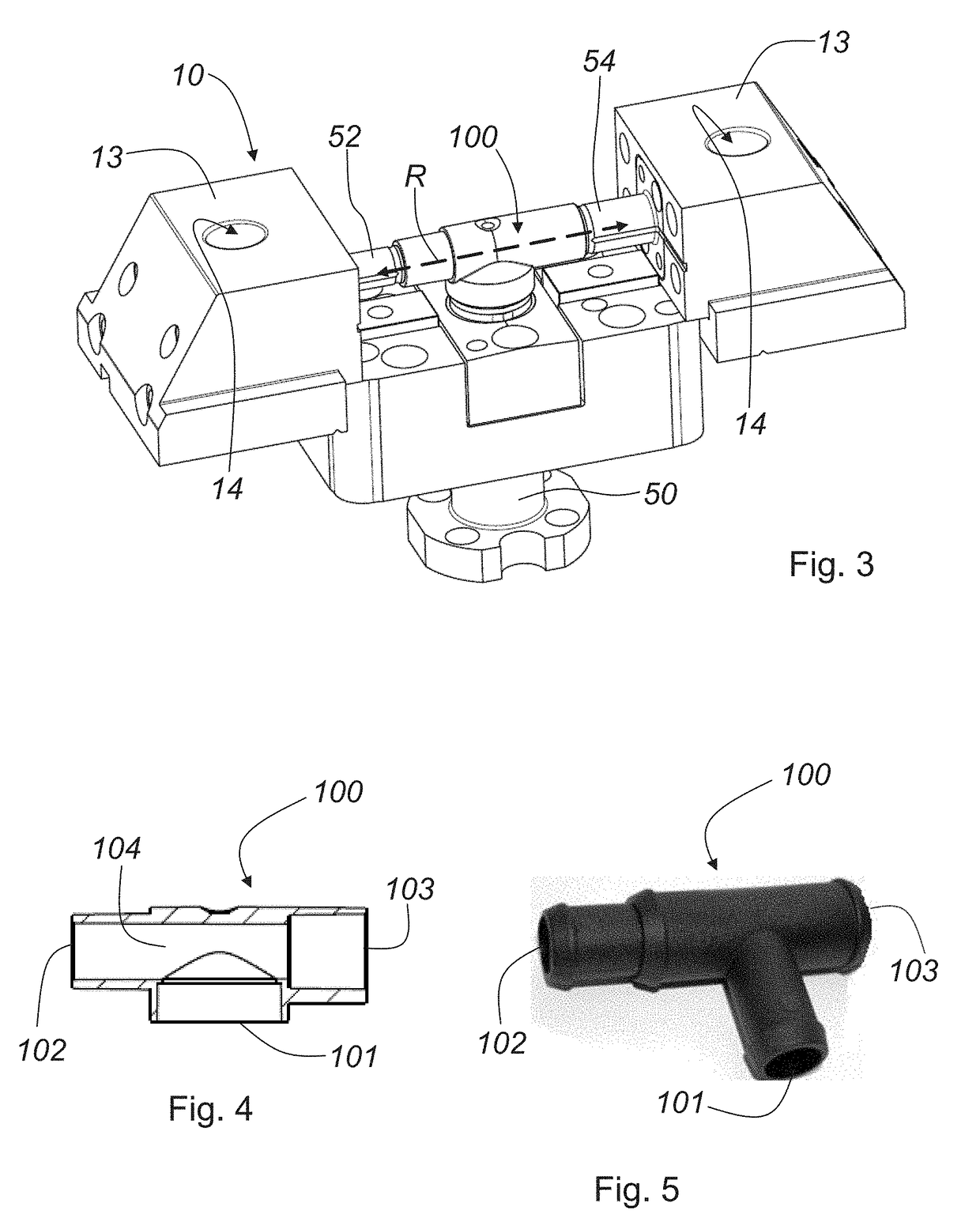Injection molding tool and method for producing a molded part
a technology of injection molding and molding parts, which is applied in the direction of tubular articles, domestic applications, other domestic articles, etc., can solve the problems of together leading to scratches and scuffs, and achieve the effects of reliable determination of target distance, high quality, and considerable stability
- Summary
- Abstract
- Description
- Claims
- Application Information
AI Technical Summary
Benefits of technology
Problems solved by technology
Method used
Image
Examples
Embodiment Construction
[0027]FIG. 1 shows a cross-section through an injection molding tool 10, in which a pretensioned lever 80 cooperates with an end switch 70. Molded parts 100 (see FIGS. 4 and 5) are produced with the injection molding tool 10 according to the invention. In the embodiment described here, the injection molding tool 10 comprises a first tool mold half 20 and a second tool mold half 30. A first slider 50, a second slider 52 and a third slider 54 are inserted into the tool mold halves 20, 30. The first slider 50, the second slider 52 and the third slider 54, together with the first tool mold half 20 and the second tool mold half 30, form a free space 40. Said free space 40 serves to form the molded part 100 which is to be produced by the injection molding process. In the inserted state, a front topology 51 of the first slider 50 is engaged with an edge topology 53 of the second slider 52 in a form-fit manner. A front end 55 (see FIG. 2) of the second slider 52 abuts a front end 57 (see FI...
PUM
| Property | Measurement | Unit |
|---|---|---|
| distance | aaaaa | aaaaa |
| distance | aaaaa | aaaaa |
| distance | aaaaa | aaaaa |
Abstract
Description
Claims
Application Information
 Login to View More
Login to View More - R&D
- Intellectual Property
- Life Sciences
- Materials
- Tech Scout
- Unparalleled Data Quality
- Higher Quality Content
- 60% Fewer Hallucinations
Browse by: Latest US Patents, China's latest patents, Technical Efficacy Thesaurus, Application Domain, Technology Topic, Popular Technical Reports.
© 2025 PatSnap. All rights reserved.Legal|Privacy policy|Modern Slavery Act Transparency Statement|Sitemap|About US| Contact US: help@patsnap.com



